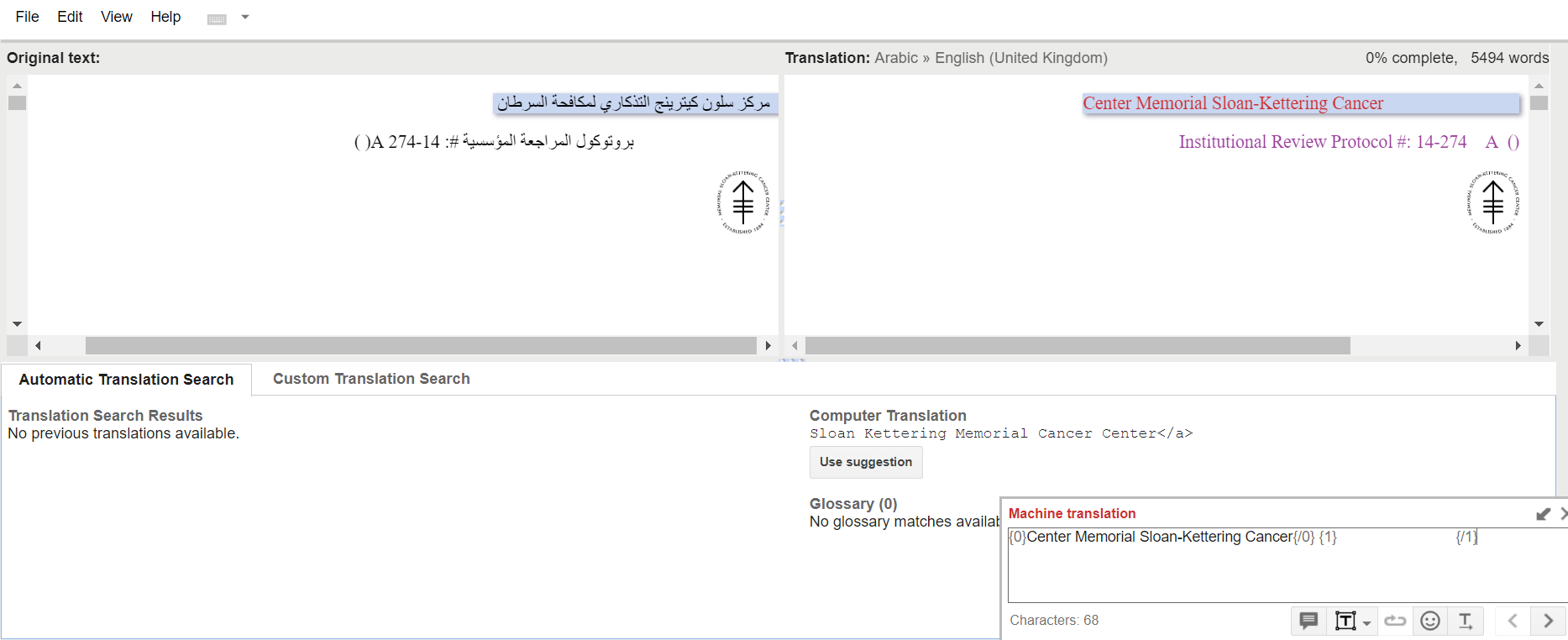By David Grunwald
Is your translator or translation agency translating your material from scratch or are they using machine translation in their workflow? I contend that many or even most professional translators are using machine translation (e.g., Google Translate) in their work. But they will never tell their customers about it. Because if they do, customers may want to pay less for the work and may also distrust the translation.
The PEMT controversy
More and more Language Service Providers (LSPs) are offering a mid-tier service level called PEMT. Which stands for Post Edited Machine Translation. In this service level, the translators get a first pass of the translation which is output from automatic translation software. The translators refine the work by editing the machine translation and weed it from any mistakes that they find. The end result is presumably as good or nearly as good as a pure human translation.
The controversial part of this workflow is that translators hate it. Many even refuse to accept PEMT projects. Why do they hate it? The main reason is that PEMT pays much less than their usual rate. Of course, they will never tell you that the reason they refuse PEMT is financial. They will prefer to cloak their response in a professional contention that the quality of the MT is too poor and it takes them more time to rework the MT than to translate from scratch. But is that true?
Machine translation translates some sentences perfectly
As anyone in the industry knows, the MT of today is nothing like the MT of 5 years ago. Quality has improved dramatically. NMT and other buzz terms may not make much sense to the lay person, but computational linguists and AI experts have been working hard to make MT work better. And they have been successful. Sometimes you can feed a sentence into Google or DeepL and get a perfect translation. Just as good as if it was done from scratch by a professional. True-some sentences come out poorly or even funny and stupid. But those sentences can be reworked. If 80% of the sentences come out perfectly and 20% need to be reworked, then using PEMT is probably worthwhile.
Custom MTs for Enterprise Customers
Many enterprise customers custom-build their own MT systems, either using an in-house team or through a third-party vendor. The result is a much more accurate MT than the generic online applications which are available for free to the general public. These MTs need even less post-editing. Which makes using a PEMT process a no-brainer for these customers. Especially as they have large volumes of content that needs to be translated.
What happens behind closed doors
If you are not an enterprise customer with high-powered MT resources, chances are that you are working with a translation agency. Is the translation agency using PEMT? You can ask them and they will probably answer truthfully. But even if they say no, can you be sure that they are not using PEMT? It is hard to know for certain, but let’s think aloud for a minute. Say you are a professional translator or an agency and you get a new project. You have access to MT (just like anyone else does). Why not run in through Google or Microsoft just to see how it looks. If it looks real good, then are you going to purposely trash it and spend all day and night working on a from-scratch translation? Of course not. You will use it and deliver it after making sure it is 100% good.
As a customer, should you care if it is PEMT or not?
I think that the answer is no. As a customer, you want an accurate translation which is true to the source. How the translation supplier got the result is of little or no importance. Of course most people hate to get ripped off and if a company charges a lot of money for something you can do yourself, you may get peeved. But should you?
Unless you are a professional linguist or an expert in the source and target languages, you will lack the skills required to determine if the raw MT is good or unacceptable. Furthermore, you will be unable to make the necessary edits needed to rework the sentences that the MT botches up. A translation agency will have the skills and the resources necessary to deliver a perfect translation. PEMT or not.
How to determine if a translation is PEMT?
You get a translation from your vendor and want to check if they used MT. Run it through an online MT and compare the results. If a high percentage of the sentences is 100% identical, then maybe they are using MT. Checking may be tricky, since there are several free, online MTs (Google, Microsoft, DeepL, Amazon, PROMT and a few more). Also, bear in mind that some LSPs have custom MTs which you won’t be able to access.
Can you get a discount for a PEMT process?
Some customers send a raw MT to an LSP and ask for a quote to revise the translation. Many of them use a deceitful tactic and claim that the translation was done by an in-house staff and that they just want to revise it to be sure it is good quality. I recommend not using this and any other dishonest approach. LSPs don’t employ imbeciles and they will see right through any lies. But can you ask for a PEMT workflow in return for a discounted price? You can certainly try and maybe, depending on the volume and type of content, get a positive response. Some LSPs offer PEMT while others don’t. But even if the LSP is open to PEMT, bear in mind that some texts can’t be translated using PEMT. Furthermore, some language pairs have weak MT resources which will make using PEMT impossible.






[…] consider avoiding entirely relying on machine translation tools like Google Translate and hiring a professional translator. Google Translate may well speed up the process and help you stay productive, but it’s key to […]